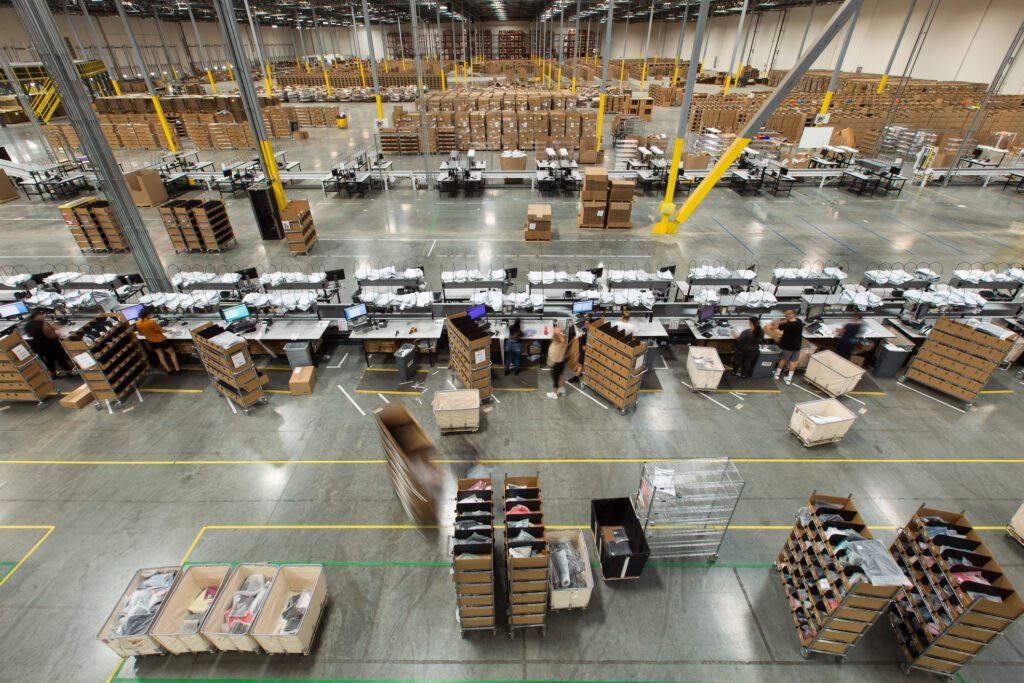Aligning automation investments with productivity goals involves evaluating your budget, calculating ROI by analyzing labor costs and operational efficiencies, and strategically planning for scalable solutions—ensuring your fulfillment processes grow smoothly and cost-effectively with your business.
In Part 1 of this series, we looked at the first step a business should take when it has become apparent that relying on manual labor alone isn’t enough to meet their fulfillment demands—taking stock of their current business operations. Getting a general overview of the extent to which you’re relying on extraordinary efforts to keep up with surges (or even ordinary demand), assessing the specifics of how much and what you’re shipping, and mapping out your growth goals helps to illuminate where your bottlenecks are and the types of equipment that would not just alleviate them but also expand your capacity.
The next step is to talk budget. No business has unlimited resources to immediately implement every automation solution that might benefit their situation all at once. Nor is that necessary. Having a firm handle on your numbers will help guide decisions for which equipment will provide the biggest bang for your buck as you create a system that can be adapted and grow with your company.
Budget and Return on Investment
The obvious first question is what is your budget? This doesn’t have to be an exact figure, but rather a range that represents what is available to start your operation’s move into automation. It’s possible that you will be able to make a solid beginning without having to use all your allocated resources at the outset, or you may decide, once you’ve looked at the big picture, that it is worth investing a little more. Having a range in mind, however, will ensure that your plans are focused on what is realistic.
A big part of taking the leap into automation hinges on the question—will it be worth it? Or more accurately, when will it be worth it? To answer that, you’ll need to discuss your expected return on investment (ROI). An effective automation solution for distribution and fulfillment is designed to lower costs by significantly reducing the amount of labor required for daily operations and by lowering (if not eliminating) the need to rely on overtime or additional temporary hires to cope with surges in demand. That means much of the calculation of ROI will be looking at your current labor costs.
How many packers are you currently paying? How much are they getting paid? Calculate a weighted value that accounts for both the regular hour rate you are paying and overtime, because if you’re regularly relying on overtime using the regular rate alone will not provide an accurate picture of anticipated labor costs without automation.
Another consideration for ROI is what kind of packing slip you’re using, as it makes a difference for printing out from a networked warehouse management system (WMS). An 8.5 x 11” label takes 8 to 10 seconds per pack, while a Zebra 4 x 6” label takes 2 seconds per pack. This difference can have a significant impact on anticipated throughput.
To what extent has your business relied on temporary hires? Have they routinely been used to help cope with peaks in demand? The savings realized by eliminating the need for temps can shorten the ROI for automation. Similarly, are you relying on one shift to meet demand, or has your operation required two to keep up? Will automation allow you to eliminate that additional shift?
Finally, what is your expected time frame to meet ROI on your automation investment? A realistic length of time, back when automation came at a steeper up-front cost and systems were not designed to be readily flexible and scalable, could be around 60 months. Nowadays, 24 to 36 months is more reasonable—or even less. Factoring your goal in will help to inform your automation choices.
Answering Your Automation Questions
When your business is poised to move into automation, the fear of making the wrong move can hold you back. Tension Packing & Automation is skilled at helping those just taking their first steps into automation ask the right questions and put together the right information to create the right solutions for eCommerce or pharmacy fulfillment operations. We’ll help you get value out of your automation investment faster. To learn more, contact us here today.
